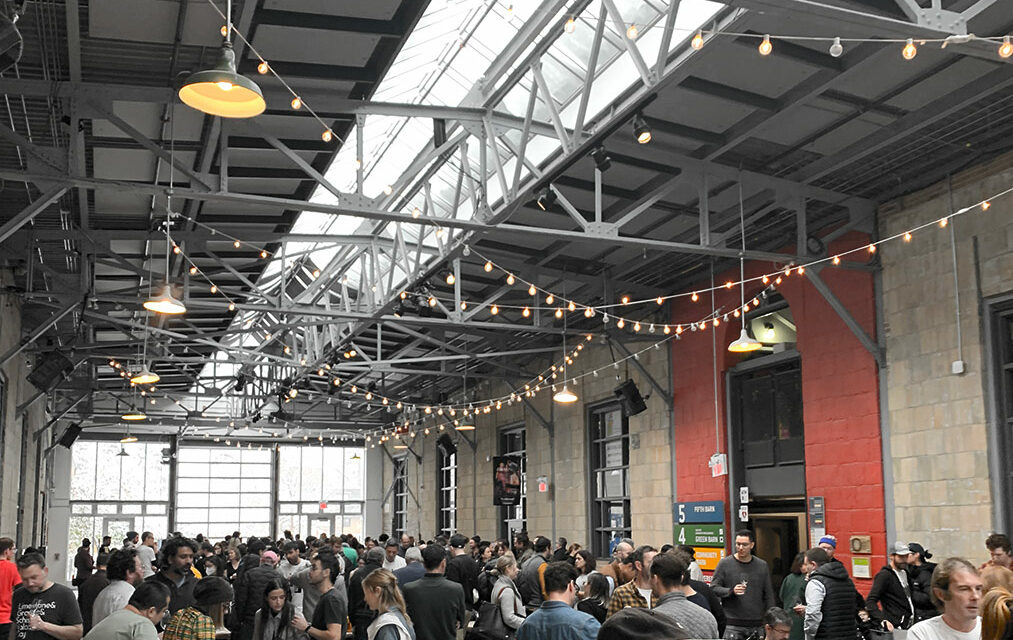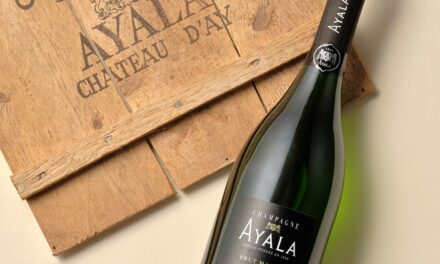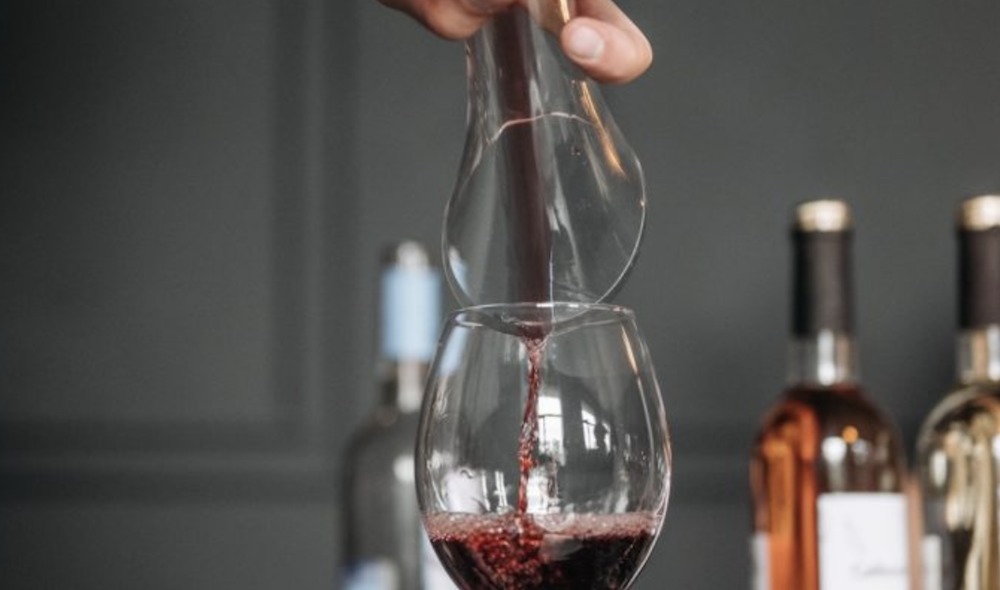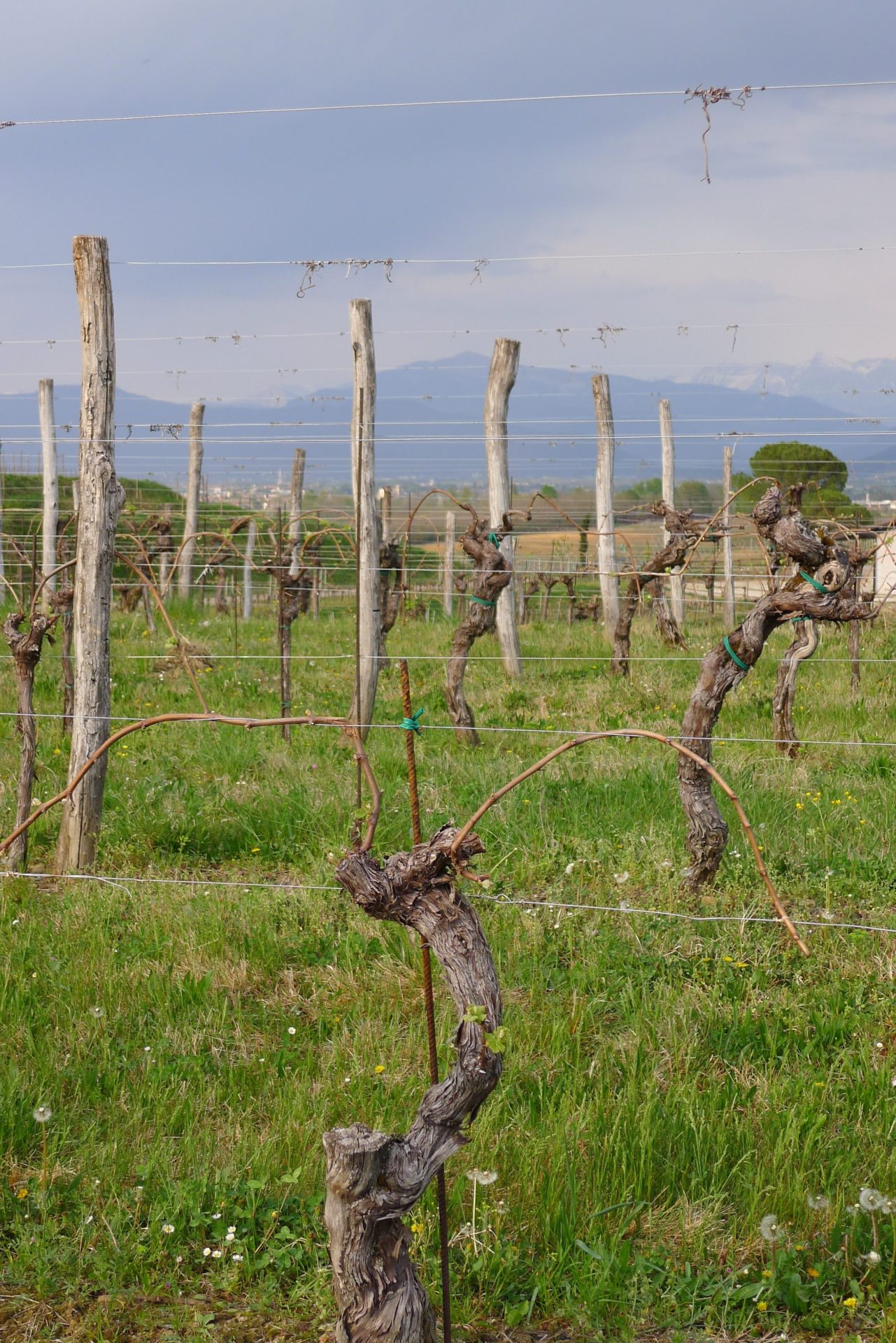Toronto received its official Natural Wine stamp of legitimacy with the arrival of its first RAW wine this November at Wychwood Barns. The festival has been hopping between cultural centres like LA, Berlin, New York, and London since 2018. It’s the barometer of what’s new and good in the natural wine movement. Over 75 producers, from the recognizable to the obscure, poured their wines and touted low-intervention winemaking virtues.
The Natural wine movement is a love-it or hate-it sub-culture of wine. I’m still figuring out what I think of the movement. I’m fond of low intervention and organic/biodynamic viticulture from an ethical perspective, but I’m skeptical of the self-congratulatory trappings of the social movement interwoven into it. My biggest beef with the category is I find the wines extremely process driven. Pour me a glass of natty wine, and I’ll bet you the wine is defined by distinctly carbonic, whole cluster aromatics, a touch of nail varnish, and a salty citrus kombucha edge to the palate. That runs the risk of trampling over terroir in the same way that mass-produced wines gloss over terroir with mega purple and sugar.
In all seriousness, I know it’s possible to make excellent terroir-driven wines under the banner of low-intervention farming and viniculture. I love that the natural wine world draws people together in curiosity and celebration of the stories behind the wines we enjoy. So in that spirit, I set out to taste through the halls of Wychwood Barns and see what’s new and delicious in low-intervention wines.
Whatever the farming and winemaking practices, wines are always a grab bag of good, meh, and bad. Below are the producers and wines who wowed. They run the spectrum from funky to classical.
Meinklang
Meinklang is a biodynamic Austrian producer whose Blaufränkisch is a regular on wine bar lists around Toronto. I’ve only had their entry-level tier of wines. They are tasty but pale in comparison to their concrete series. They are big proponents of using concrete eggs in the cellar for their capacity to allow tiny amounts of oxygen through without adding any flavour or additional tannins to the wine as oak vessels do. The winery estate is a diversified farming operation run by two generations of the Michlits family. Their wines range from Pet Nat to still whites to medium-bodied reds. These are the wines that stood out in the lineup.
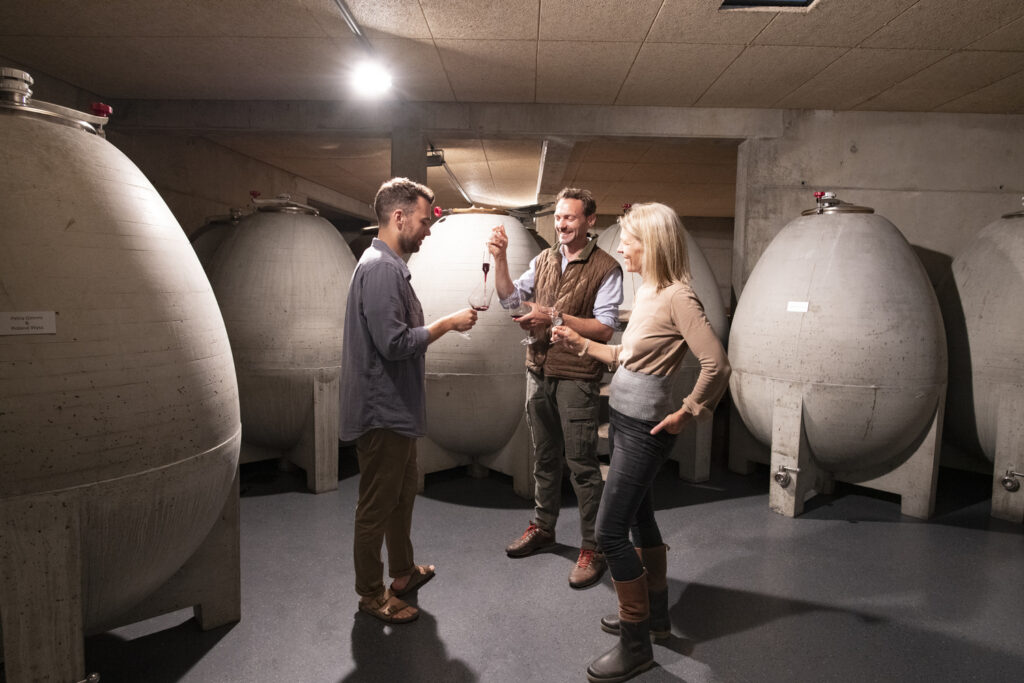
Concrete fermentation vessels in Meinklang Cellar. Photo Courtesy of RAW Wine
‘Tag’ Gruner Veltliner Edition 3- Multi Vintage Blend
Carbonic maceration and hence skin contact for two weeks. The grapes were pressed, and fermentation carried on in concrete eggs. Aromatically bursting out of the glass. Fuzzy peaches and fresh lemon zest, pink grapefruit. Terpenes and florals galore. Fruit punchy in the way that New Zealand Sauvignon Blanc. The palate is bright, dry and mineral. Citrus pith and grapefruit oil carries. Delicious.
![]()
‘Morgen’ Sankt Laurent Edition 3 -Multivintage Blend
35-year-old Sankt Laurent vines. A short period of whole cluster maceration followed by fermentation in concrete. The wine is ethereal and juicy with red gummy candies and violets with a touch of black pepper. This is definitely glou-glou, but there is elegance and complexity in how the wine knits all its flavours together.
![]()
‘Abend’ Edition 3- NV – Multivintage Blend
A blend of Sankt Laurent and Blaufrankisch. Whole cluster maceration for 45 days and then into a concrete egg to finish fermentation. Similar in weight to a Pinot Noir with a bright, juicy cherry-pomegranate palate. A spicey peppery edge grounds the wine and adds complexity.
![]()
Represented by The Living Vine
Recaredo
The traditionalist producer of Cava is the first Demeter certified biodynamic winery in Penedes and one of the nine producers in Corpinnat. They work exclusively with the three traditional grapes of Cava. All of their Cavas are vintage dated, Pas Dosage and see extended aging on lees. They also produce still wines from Xarello, Macabeo, and Parellada under the Cellar Credo label. These are the wines that shone brightest from their entirely stellar range.
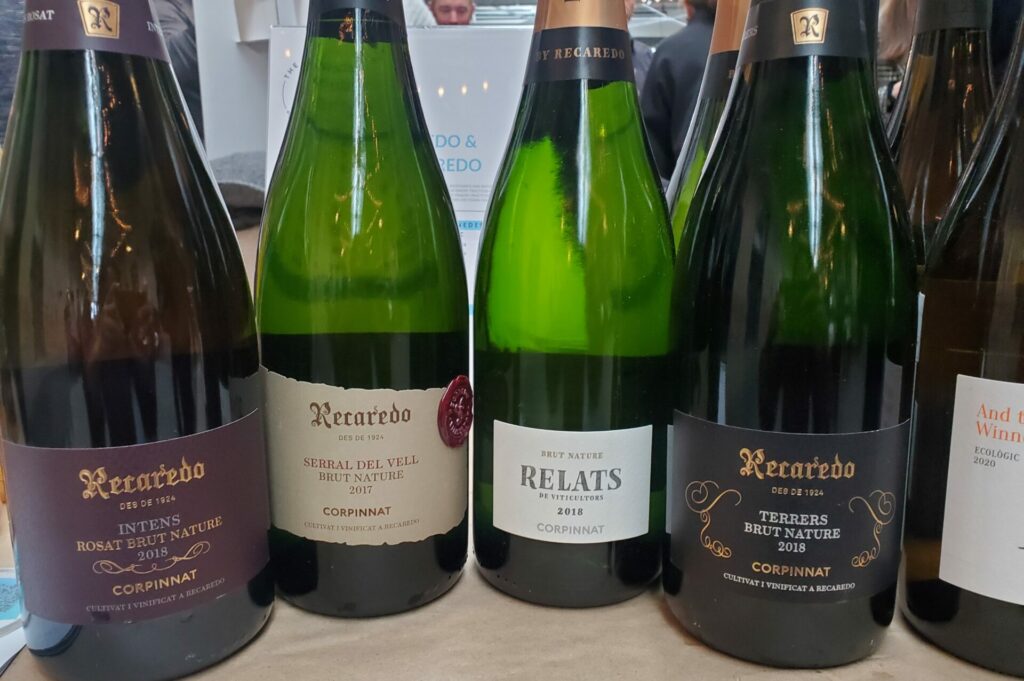
Cavas of Recaredo Cellars
2021 ‘Miranius’ Xarello, Cellar Credo
Connects the dots on the dried citrus and chaparral brush aromatics that come through on Cava. Dried apricot, honey, sage and bay leaf with preserved lemon and a nutty almond-like finish. Sometimes I find Xarello too subtle as a still wine, but this has great flavour and complexity. I love the savoury nature of this minerally white wine.
![]()
2018b ‘Terre Brut Nature’
65% Xarello, 18% Macabeu, 17% Parellada. 39 months on lees. Texturally delicate with tiny bubbles like fine sugar crystals that roll across your tongue. Cava like this always has the feel of the holiday season for me. It’s a mix of ripe apples, yellow plum, candied orange peel and salted Marcona almonds. A floral and honeyed note comes through on the finish. I appreciate Cava of this calibre for the generosity of fruit, the more voluptuous shape of the wine on the palate and its ability to pair with heartier dishes.
![]()
2018b’Relats de Viticultors’
All three Cava grapes plus a dash of Monastrell. 30 months on lees. A more herbaceous and mineral drive style of Cava. The mousse is voluminous, almost overwhelming the flavours of the wine. It’s got some settling down still to do. Notes of crunchy green apples, pithy lemons and crushed oyster shells lead the wine. There is also a subtle hint of something fresh, green and slightly floral, like grated nutmeg and linden flower.
![]()
Represented by The Living Vine
Mas Goma
They are based in Penedes but choose not to label as Cava DO. They work exclusively with old vine plantings of native varieties such as Xarello and Macabeu. Their wines span the elegant, mineral and conventionally recognizable to the bright orange, earthy, funky type. The best of their wines have a certain dynamism on the palate. The wines have a sense of shape and movement rather than a straightforward unpacking of flavours as you sip. Also, they have such a wholesome story of generational change in the winery. Joan Jr led the charge on steering their winemaking towards more skin contact and natty wine styling. Still, Joan Sr. quickly became an enthusiastic partner in pushing those boundaries. Super compelling wines. I’ll be excited to follow their wines year to year.
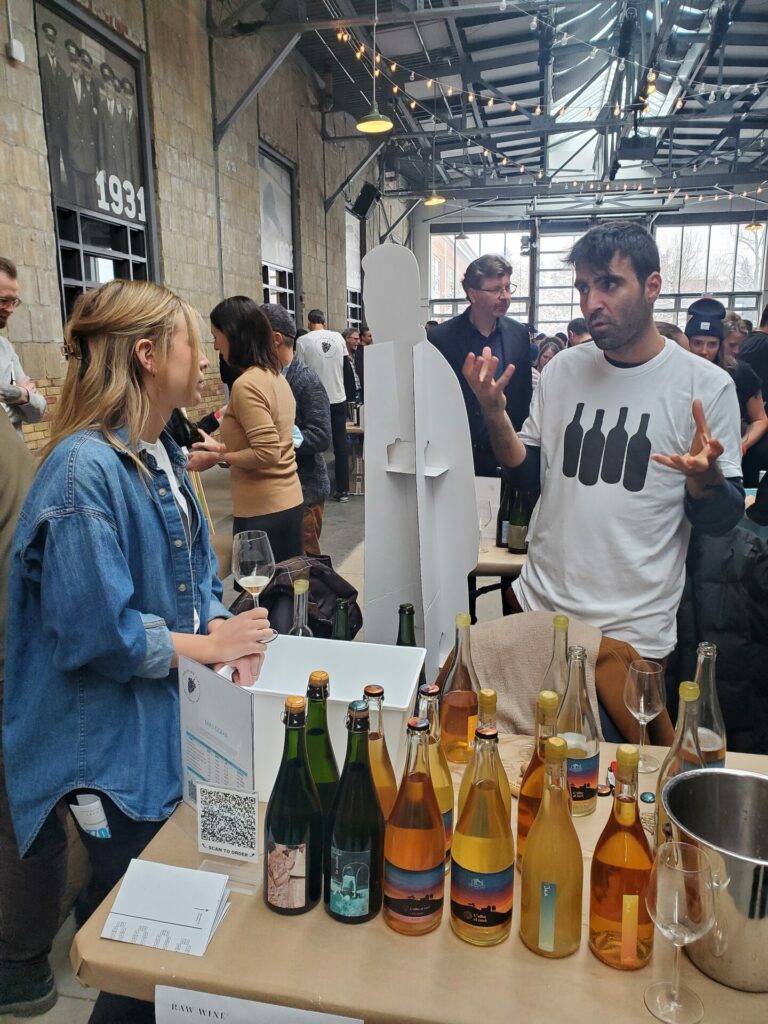
Joan Vendrell Jr explains their winemaking philosophy
2021 Jan
70yr old Xarello vines, direct press into stainless steel tank for fermentation. Bright lemony tones with an almond blossom note and a slightly nutty finish. Mineral-driven with a lovely textural finish.
![]()
2021 Pere
Same plot of 70yr old Xarello vines but vinified in concrete. The aromas and notes are similar to the Jan, but the wine is more aromatically open, and the acids seem more focused on this concrete version. The fruit takes a backseat to the minerality.
![]()
2021 Joan
Old Xarello vines again. This time made with 21 days of skin contact, and then the fermenting must is transferred to amphora for six months. Aromatically lifted and pretty. All honey and fruit. Dried apricots and fresh orange zest, wildflower honey up front. Oolong tea and almond blossom in the background. Bright, persistent acids keep the wine feeling lively. There is such a wonderful texture and sense of movement on the palate. Swoon-worthy.
![]()
Lalba Turo Blanco
Old vine Macabeu Pet Nat; disgorged after six months. Dry, salty and citrus driven. Honeydew melon and green pear on the nose. Similar fruit profile on the palate with a distinct kefir lime and citrus salt note on the finish. This would be heaven on a patio with prosciutto al melone.
![]()
NV El Creuer
Old vine fruit. 60% Xarello 40% Macabeu. This tastes like mature Cava. Dried lemon wheels, candied orange peel, salted almonds, bay leaf, and honey. There is a hint of something floral. Richly textured with a lees-driven brioche background giving weight to the more citrus and herb notes up front. Exceptionally tasty.
![]()
Represented by The Living Vine
Sebastian Van De Sype
Sebastian is a former engineer for Ferrari turned winemaker. He has the good fortune of having Frank Cornelissen of Etna winemaking fame as a friend and advisor. His first vintage was made in 2021, producing two Lambrusco from Grasparossa. Both are finished dry and are absolutely delicious. Viticulture is all organic and sulphur adds are kept minimal. His wines are a fun find. He’s approached Lambrusco in a way that elevates the category’s potential by moving away from Charmat method production and prioritizing native yeasts for ferment.
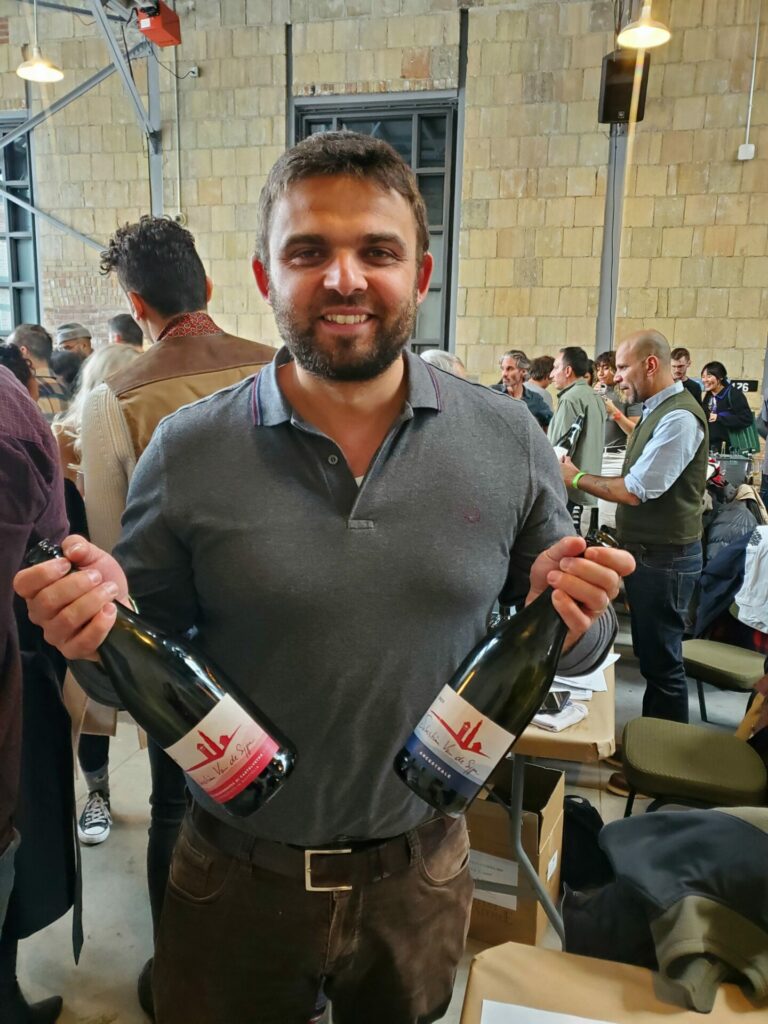
Winemaker Sebastian Van De Sype with his first vintage of Lambrusco
2021 Rifermentato
Traditional method with primary fermentation in stainless steel tanks. The wine is not disgorged before release and can evolve in the bottle as long as you let it. I like the finer bubble structure and lees-driven savoury note that lingers in the background. Lots of fresh red berries and currants. Something a little briny and green, like olives and spice box on the finish.
![]()
2021 Ancestrale
Single ferment in stainless steel tank captured in bottle and left to ferment dry. This is disgorged after a few months in the bottle. The fruit runs a bit darker, with more wild blueberry and black currants. Still, something woodsy and a bit green, like pine, hides behind the fruit. The pressure is not as high as the traditional method, so it has a silkier fine-bubbled feel. Also delicious. The complexity may be less obvious.
![]()
Madson
A small project out of the Santa Cruz mountains emphasizes farming as the starting point for crafting excellent wines. They work with eight key vineyards, the majority in and around the Santa Cruz Mountains. The vineyards are all leased, but the Madson team works with growers to shift the farming to organic with an eye towards regenerative agriculture. Founder Cole Thomas and his partners Ken Swegles and Abbey Chrystal have experience across all the major Pinot Noir producing corners of the wine world, including the Mornington Peninsula of Australia, Central Otago, New Zealand, Burgundy, and Sonoma. Their make Chardonnay and a range of reds from Pinot Noir, Syrah and a bit of Cabernet Sauvignon. The Pinot Noirs are what stood out for me.
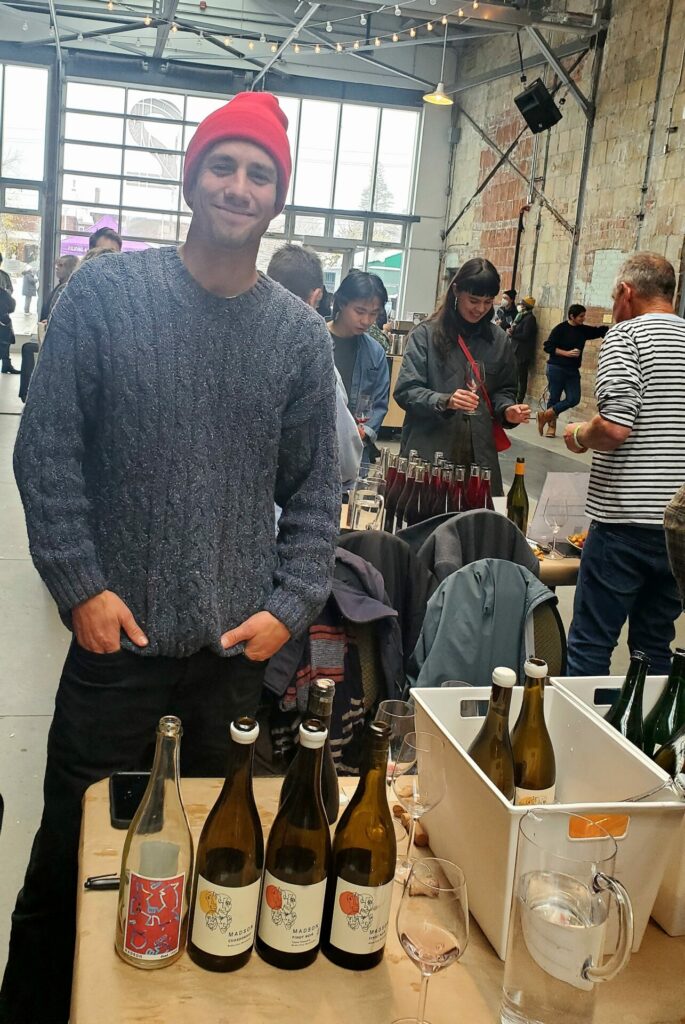
Founding winemaker Cole Thomas
2020 Legan Vineyard Pinot Noir
High elevation site, old vines and sandstone soils. 100% whole cluster with gentle cap management during maceration. Bright red currant, pomegranate and kirsch notes drive the wine. Inflections of spice, cracked green peppercorn, and an umami mushroom note adds dimension to the wine.
![]()
2020 Toyon Pinot Noir
There are lots of delicious Pinot Noirs out there in the world. Very little of it rises to the finesse and purity of fruit that defines the best examples of the grape. Madson’s Toyon Pinot Noir strikes that elusive balance. Toyon is the coldest vineyard site they work. Sandstone and silt are the predominant soils. Narrow spacing on the vine rows controls vigour along with the shallow topsoil. The fruit profile is tart raspberry and pomegranate with a tart herbaceous note like sumac.
![]()
Represented by Heirloom Vine Imports
Stirm
Stirm is another small winery out of Central California, based in Southern Santa Cruz County. Winemaker, Ryan Stirm, has garnered a reputation as a Riesling specialist. He also works with a range of mostly forgotten grapes in heritage vineyards across the Central Coast. Below are a few of the wines I found especially outstanding. His full range of wines is worth seeking out.
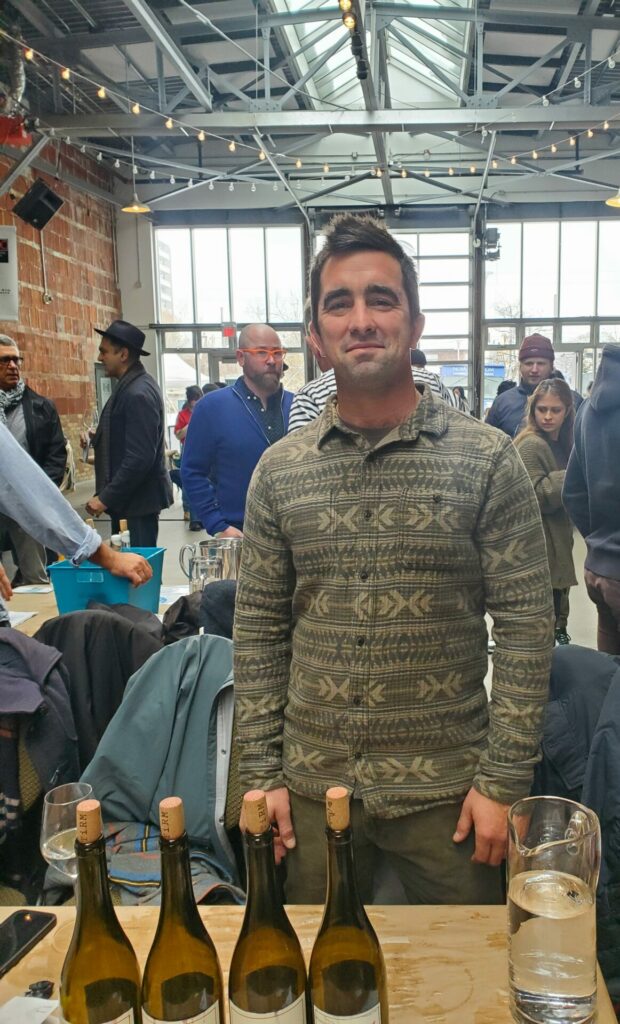
Winemaker Ryan Stirm
2021 Pinot Noir, Gularte Vineyard, Santa Lucia Highlands, California
Pinot Noir from a benchland site bordering a primary agricultural zone of Central California. When you drive through this area, it’s not the first place you would think of for sourcing high-end Pinot Noir, but the Santa Lucia highlands sees all the critical elements for quality viticulture. Coastal fog heavily moderates the weather that can veer searingly hot on the Salinas Valley Floor. The benchlands twist and turn up and down the valley’s length, offering a range of exciting exposures for planting vines. This plot of Pinot Noir faces east for a cooler site. Ripe black cherries and loads of herbaceous spicy notes lead the attack. Texturally the wine has fine sticky tannins that balance the fatness of fruit on the mid-palate.
![]()
2020bWirz Vineyard Zinfandel Cienega, California
120-year-old dry-farmed vines are thriving on their own roots. Super micro yields, super concentrated delicious fruit. Limestone and sandy loam soils dominate the vineyard. Geologically an interesting site as the San Andreas fault line cuts through the vineyard. 10% Riesling that has seen two weeks on skins is thrown into the mix; this adds an aromatic boost without any obvious Riesling notes. Aged in redwood barrels.
![]()
2021 Cabernet Pfeffer, Stirling Vineyard, San Benito County, California
A historical curiosity of a grape that’s enjoying a bit of a revival. Approximately fifteen acres exist in the Cienega Valley, including at the Siletto Vineyard, where this wine is sourced. Cabernet Pfeffer’s origin story was a mystery, with the grape either attributed to an obscure old Bordeaux varietal or a crossing of Cabernet Sauvignon x Trousseau. The vine itself and the wine it makes bear a resemblance to Trousseau; floral, red-fruited, with a spicy background without veering green. This example hits all those characteristics with tones of violets and dried roses, wild raspberries and forest undergrowth—peppery and briny spice akin to Syrah. Genetic testing has identified Cabernet Pfeffer as Mourtaou from Southwest France, thus solving the mystery.
![]()
Represented by Heirloom Vine Imports
(All wines are rated out of a possible five apples)

